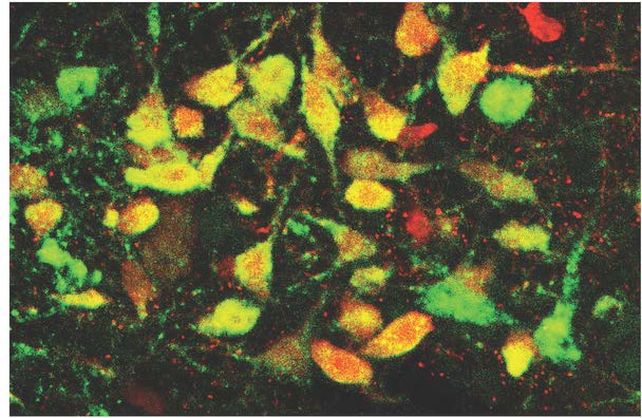[ad_1]
The hair rising on the again of your neck, the gelid pool within the pit of your abdomen, the flutter in your coronary heart when a shadow shifts.
Concern might be devastating, sickening, and, unusually, numerous enjoyable. But it surely’s additionally a particularly helpful emotion – an instinctive response to hazard that may finally improve our odds of survival when conditions take a flip for the more serious.
There are occasions, nevertheless, when concern is not an applicable response. In circumstances corresponding to anxiousness issues and stress issues, the concern response can grow to be disproportionate to the scenario or surroundings of the person, significantly impeding psychological well being and high quality of life.
In a bid to raised perceive concern and the way it works, a crew led by neurobiologist Hui-Quan Li of the College of California San Diego has mapped the modifications in mind chemistry and neural signaling in mice receiving hefty frights – and, even higher, found out methods to cease it.
“Our outcomes present necessary insights into the mechanisms concerned in concern generalization,” says neurobiologist Nicholas Spitzer of UC San Diego.
“The good thing about understanding these processes at this stage of molecular element – what’s going on and the place it is happening – permits an intervention that’s particular to the mechanism that drives associated issues.”
The research was performed in mice genetically modified to precise a selected transporter of the necessary neurotransmitter glutamate within the mind, in addition to a fluorescent protein within the nuclei of their mind cells, to permit the crew to trace the modifications within the mind.

The mice got electrical shocks at two totally different severities underneath particular situations. When returned to that house two weeks later, mice tended to freeze in concern.
Those who obtained a robust shock additionally tended to freeze in a unique surroundings, demonstrating an overgeneralized response. A glance inside their brains confirmed what prompted this overzealous concern response.
Particularly, the researchers checked out a area of the mind referred to as the dorsal raphe, situated on the mammalian brainstem. This a part of the mind is accountable for the modulation of temper and anxiousness, in addition to offering a considerable quantity of serotonin to the forebrain.
The dorsal raphe additionally, importantly, performs a major function in studying concern.

They discovered {that a} extreme fright form of flipped a change within the neurons, altering the neurotransmission mechanism from glutamate, which excites neurons, to GABA, which inhibits neuronal exercise. The change seems to maintain a concern response the place it will in any other case shut down or be absent, producing signs in keeping with a generalized concern or anxiousness dysfunction.
A research of the brains of deceased people who had suffered from PTSD whereas alive confirmed the identical change from glutamate to GABA neurotransmission. This supplied a place to begin to determine methods to suppress the concern response.
A method was to inject mice with an adeno-associated virus that suppresses the gene accountable for making GABA. When the researchers educated these mice with the concern stimulus, they didn’t develop the indicators of generalized concern dysfunction seen within the mice not handled with the virus.
That preventative methodology would require some foreknowledge of an ongoing stressor that would lead to a dysfunction.

Nevertheless, the researchers discovered a technique of mitigating the consequences of concern after the actual fact. If handled with the frequent antidepressant fluoxetine instantly after receiving a fright, the neurotransmitter change and subsequent generalized concern have been prevented.
But it surely needed to be rapid. Administering the drug after the change occurred, and the concern response was evident, was too late. The researchers say this might clarify why antidepressants are sometimes ineffective in sufferers with PTSD.
It isn’t a treatment, but. But it surely’s a promising begin down a path that would result in efficient therapy.
“Now that now we have a deal with on the core of the mechanism by which stress-induced concern occurs and the circuitry that implements this concern, interventions might be focused and particular,” Spitzer says.
The crew’s analysis has been revealed in Science.
[ad_2]
Supply hyperlink

